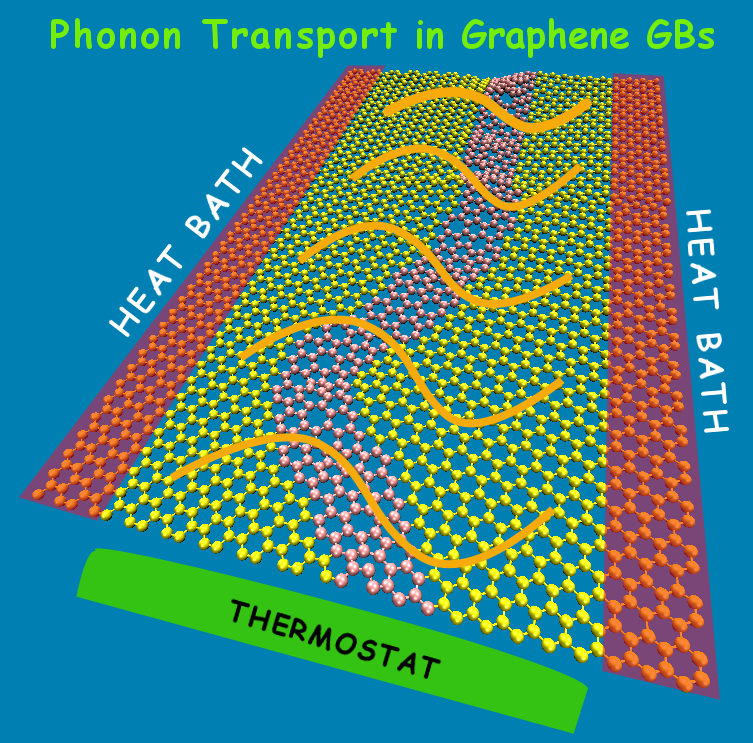The integrity of phonon transport properties of large graphene (linear and curved) grain boundaries (GBs) is investigated under the in uence of struc- tural and dynamical disorder. To do this, density functional tight-binding (DFTB) method is combined with atomistic Green's function technique. The results show that curved GBs have lower thermal conductance than linear GBs. Its magnitude depends on the length of the curvature and out-of-plane structural distortions at the boundary, having stronger in uence the latter one. Moreover, it is found that by increasing the defects at the boundary, the transport properties can strongly be reduced in comparison to the effect pro- duced by heating up the boundary region. This is due to the large reduction of the phonon transmission for in-plane and out-of-plane vibrational modes after increasing the structural disorder in the GBs.

The integrity of phonon transport properties of large graphene (linear and curved) grain boundaries (GBs) is investigated under the in uence of struc- tural and dynamical disorder. To do this, density functional tight-binding (DFTB) method is combined with atomistic Green's function technique. The results show that curved GBs have lower thermal conductance than linear GBs. Its magnitude depends on the length of the curvature and out-of-plane structural distortions at the boundary, having stronger in uence the latter one. Moreover, it is found that by increasing the defects at the boundary, the transport properties can strongly be reduced in comparison to the effect pro- duced by heating up the boundary region. This is due to the large reduction of the phonon transmission for in-plane and out-of-plane vibrational modes after increasing the structural disorder in the GBs.
